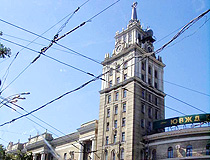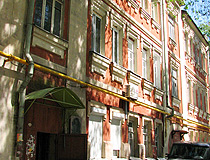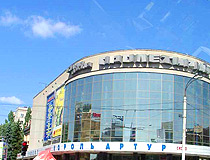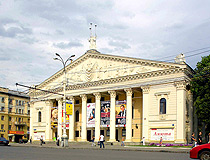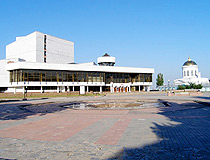Voronezh places of interest
Voronezh city center
Lenin Square, Plekhanovskaya and Kirov Streets form Voronezh city political and business center. The city and the region administration as well as the Voronezh region Duma and Voronezh city Duma are situated here.
Voronezh State Opera and Bailey Theater matches the official style of Lenin Square. Opened in 1931, the theater moved into this building in 1961.
South-East Railway administration building
The building of the South-East Railway administration designed by M. Troitskii in stalinesque classicism in the middle of the twentieth century, is now the architectural symbol of Voronezh.
Nikitin Literary Museum
Address: 3, Plekhanovskaya Street.
The building, popularly known as “the Magistrate” was built in the middle of the 18th century and was originally a two-storey till 1795. It was once a seat of city administration, there were the Prosecutor’s offices, the Voronezh Provincial Archives, the offices of the local public self-government institutions and the Provincial Museum of the Local Lore.
After 1917, the building was rebuilt into a hotel and, since 1984, it has become the Literary Museum named after Nikitin. It holds the expositions telling the story of life and arts of thegreat Russian writers who were born, lived and worked in Voronezh - Koltsov, Nikitin, the Nobel Prize Winner Ivan Bunin and Andrey Platonov.
Nikitin Memorial House
Address: 19, Nikitinskaya Street.
The poet and his father built it in 1844. Since 1844, when he had to leave the Seminary and till his death in 1861 Ivan Nikitin was forced to earn his living and to support his parents by holding and managing the inn for the peasants and petty traders.
Still, hard work and material difficulties could not destroy young man’s poetic talent. Just at this house Nikitin wrote his numerous long and short poems and concluded his autobiographic story “The Seminarist’s Diary”.
The Memorial House was inaugurated in 1924. Among its relics are different personal belongings of the poet, his domestic articles, letters, manuscripts and the earliest editions of his works.
Marshak House
Address: 72, Karl Marx Street, former Sadovaya (Gardens) Street.
It is a three-storey building in a modern style of the beginning of the 20th century with the characteristic semi-ovals of the front entrance. In 1989, a memorial plate was placed there with the picture where the portrait of the writer is surrounded by the images of his most popular heroes.
Samuil Marshak was born in Voronezh in 1887 (the house of his parents has not survived) and later lived in Ostrogozhsk and studied in England. When the First World War began Marshak returned to Voronezh, and stayed in his uncle’s house on Sadovaya Street. There he worked on translations of English poetry and old popular ballads.
Due to the strong eye-sightedness Marshak was released from the military service but still served his country as a social worker helping the refugees from the Western provinces of Russia then occupied by the German troops.
Mandelshtam House
Address: 4b, Shveynikov Street.
In this plain little house of Ye. Vdovin, an agronomist, Osip Mandelshtam, one of the greatest Russian poets of the 20th century, and his wife rented lodging during their exile to Voronezh in 1934-1935. Communication with the actors of the Voronezh Drama Theaterwhere he served as the head of the Literary Material Office was for Mandelshtam his dearest joy and but the only possible distraction.
He was sure that the Shveynikov Street that he called “a street-hole” would be named after him one day. Another memorial plate is placed on the 13, Frederick Engels Street where in the flat #39 the Mandelshtams also lived.
Nikitinskaya Square
In the very center of Voronezh city there is a Nikitinskaya Square. It takes its name from the monument created by the sculptor Shuklin in 1911 in tribute to Ivan Nikitin, a famous Russian poet of the 19th century.
At this square there also situated one of the most popular of the city movie-theaters - “Proletary”. In its architecture two different styles are interestingly combined: the original one - the modem of the beginning of the 20th century (architect M. Zamyatnin) with the sculptures of the Muses, and the constructivism of the middle of the same century (architect Lvov) with its synthesis of glass and concrete.
Rostropovitches Musical School
Address: 41, Revolution Avenue.
The building was specially designed for the Musical School before the First World War and later, in the middle of the 20th century, it was reconstructed. In 2002, the School was named after Rostropovitches whose former house is not far from it.
Three generations of the outstanding musicians lived there. Vitold Rostropovitch was the founder of the Voronezh piano school. His son Leopold was himself a well-known Russian violoncellist and composer but his greatest achievement was that he brought up, educated and trained his own son Mstislav to become one of the outstanding violoncellists and conductors of our time.
Mstislav Rostropovitch is now an Honorary Citizen of Voronezh. He is known to provide aid and support for the development of different cultural initiatives and social programs of the city.


